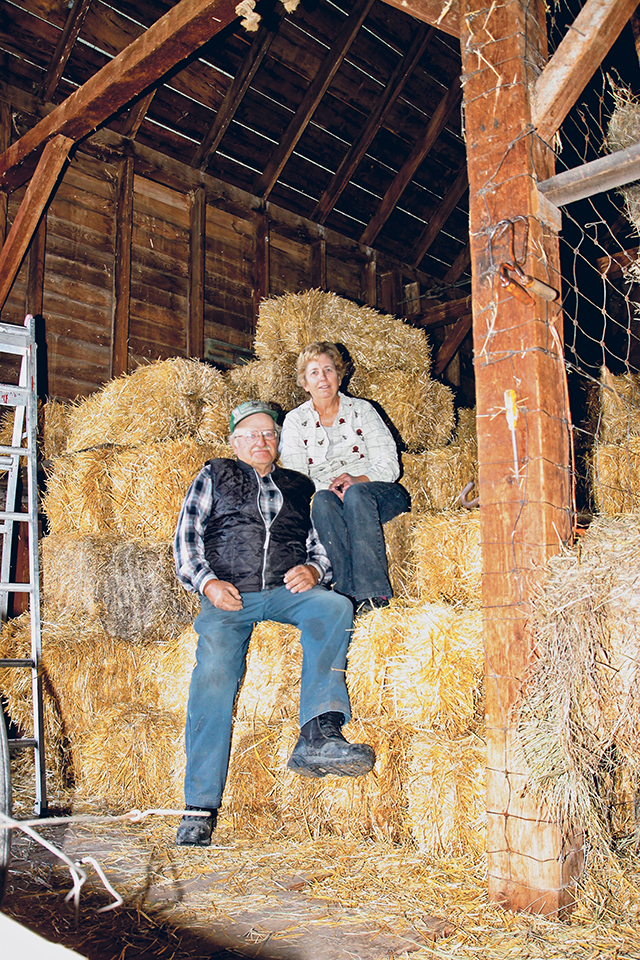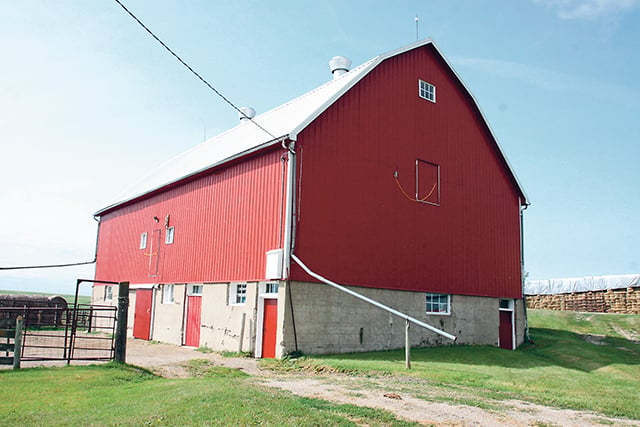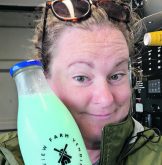Couple upgrades heritage homestead while operating a mixed farm they hope will some day pass to the next generation
As ancestors pass, the barn still remains and remembers their calloused hands
— excerpt from The Old Barn by Bea Janssens
HARDING, Man. — They live in a 1900 house a stone’s throw from a 100-year-old barn on a farm homesteaded in 1881, and they have vacationed at Alberta’s historic Bar U Ranch.
“We are history buffs,” said Cameron Dodds, who operates a mixed farm with Bea Janssens.
“We’re lucky we have a heritage to preserve.”
Dodds is happy to do upkeep on his family farm’s heritage buildings because they are among the few that are still standing on the Prairies.
Read Also

Nutritious pork packed with vitamins, essential minerals
Recipes for pork
“It honours the people who were here before us but can be used today as well,” he said.

Cameron Dodds and Bea Janssens are preserving the historic buildings on their farm at Harding. | | Karen Morrison photo
The one-and-a-half storey brick farmhouse with a peaked roof included a parlour, summer kitchen, fieldstone foundation and cellar hatch and retains much of its original woodwork.
“There’s a lot of character in the house, and it takes a character to keep it up,” said Dodds, who noted upgrades in insulation values and the foundation.
Dodds said the 40 x 64 foot barn was built by Arthur Drummond for $5,000 in 1917.
He was one of seven children born to Matthew and Margaret Drummond, who moved here from Ontario. It later passed to Dodds’ parents, Les and Bessie, and then to Dodds in 1992.
The bunk barn was designed with a gambrel roof with a double slope on each side to create more storage in the loft, which is accessed from the side hill.
Roof top lightning rods and a hay claw grapple on a rail that was used to unload racks of hay remain in place today. A large wooden tank in the loft was filled from the well at the reservoir on the property by a pump jack and supplied water for livestock in the barn.
Overhead bins were built in the loft for grain storage along with bins with chutes to carry grain to a box below for ease of feeding. A mechanical barn cleaning system on a rail carrying a manure bucket ran down each side of the barn.
Today, the main floor’s stalls continue to be used for the couple’s 60 head cow-calf operation. Nearby corrals secure a handful of horses.
Their 480 acres produce wheat and canola, and additional pastureland is rented for the herd, said Dodds.
He also plants corn for fall grazing.
“It affords a lot of feed in a small area,” he said.
They received deep snow last winter and are content with the amount of rainfall this growing season.
Janssens, a mother to two adult daughters, worked for a restaurant before meeting Dodds through a dating club but longed to live on a farm and work with animals.
They work as a team, sharing the workload, getting help at times from Dodds’ retired brother.
“We do things the old-fashioned way, hands on, so cattle are quieter, easier to handle,” said Janssens.
“We treat them as we would like to be treated,” she said, recalling the blankets used to warm calves during a March blizzard.
Added Dodds: “We love our animals.”

The barn, built in 1917, is still used for their cow-calf operation. Their home dates back to 1900.| Karen Morrison photo
They use a cow cam installed in the barn’s maternity area to keep watch at calving in February and March.
Dodds said they survived BSE by feeding calves for the fat market, avoiding spending and minimizing debt.
“You’ve got to do without to not have debt. It makes for hardships at times,” said Dodds.
Added Janssens: “We never bought anything new.”
They say marketing can be challenging.
“You watch the market the best you can and hope you can make the right decision,” Dodds said.
He said the love of the land and a desire to remain on the family homestead keeps him here.
“I’ll keep at it until I get it right. It’s hard to quit,” said Dodds.
The couple will likely downsize the herd in the coming years but hope the farm will always be here for them and their family.
“I’d like to see it go to someone in the family so we can walk back in here at any time,” said Janssens.

















